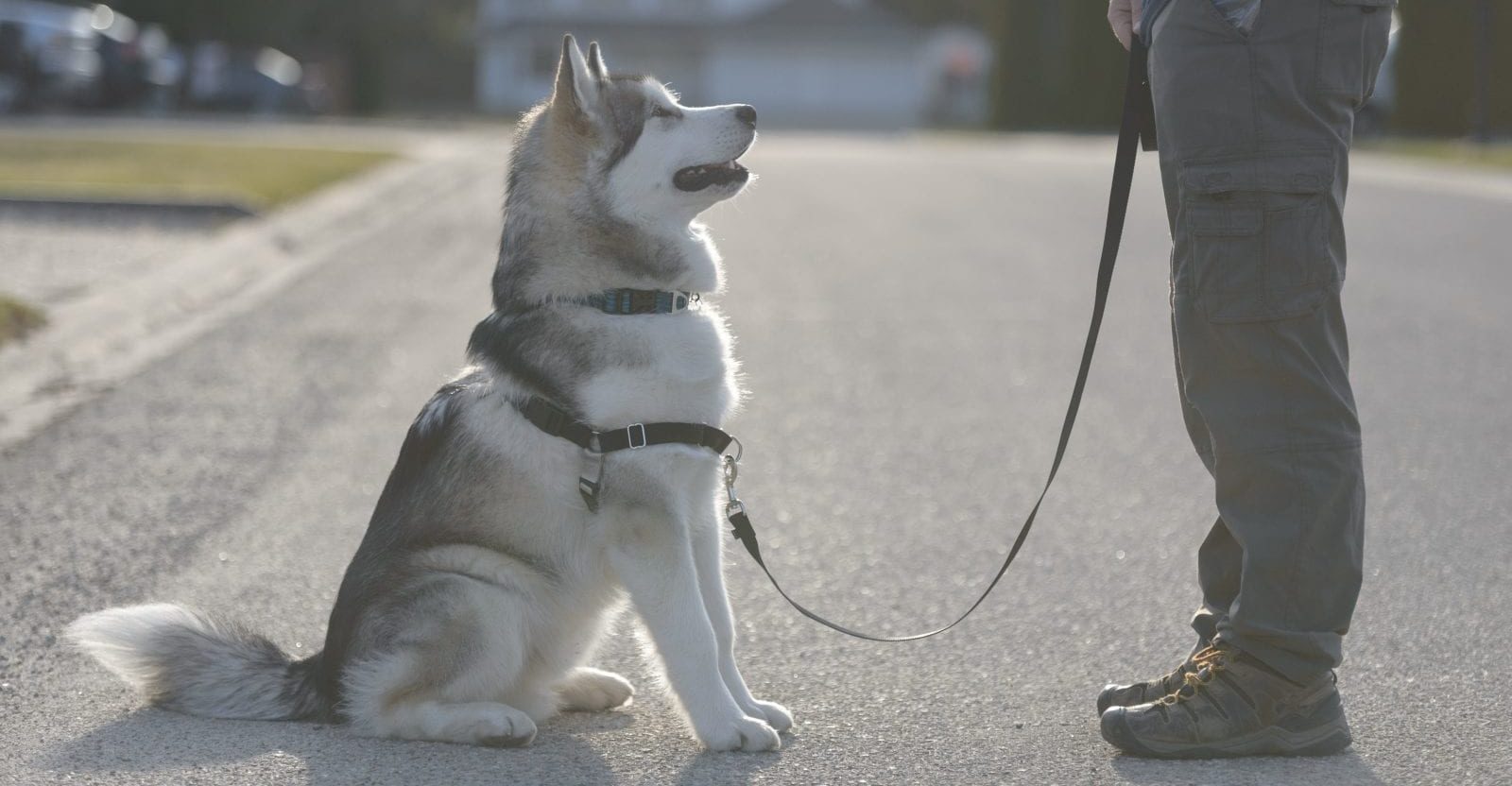The BC SPCA supports force-free humane training methods based on the science of how animals learn.
We do not support training methods or equipment that cause anxiety, fear, distress, pain or injury. We support choosing a trainer who uses force-free humane training methods.
Force-free humane trainers will never use fear or pain on purpose to train your dog. They will support and encourage you as you learn to train your dog.
The BC SPCA’s AnimalKind accreditation has standards for dog training. AnimalKind will help us connect dog owners with trainers who use verified humane methods. If there are no AnimalKind dog trainers in your community, check out our dog training standards (PDF) or use our checklist below to help you choose a trainer.
Checklist for choosing a trainer
1.) Training method
What to look for:
-
- Force-free, reward-based/positive reinforcement (R+) training methods
- Humane training methods that focus on rewarding/reinforcing what you want your dog to do and using motivators like treats, food, play (what the dog finds motivating) and not forcing a dog to do something
What to avoid:
-
- Training methods that use harsh verbal or physical corrections
- Methods that cause anxiety, fear or pain to punish your dog for unwanted behaviours
- Equipment or training tools that cause anxiety, fear or pain such as bark or shock collars, prongs, choke chains or sprays (even unscented) and are used to punish your dog for unwanted behaviour
2. ) Trainer
What to look for:
-
- Good teacher who can explain and demonstrate the behaviour they’re teaching
- Teacher good at coaching you on how to train your dog
- Sees both you and your dog as learners
- Patient and supportive coach
- Can adapt humane methods for each dog
- Search our list of AnimalKind trainers here
What to avoid:
-
- Someone who can’t explain the behaviour they’re teaching and why
- Anyone who can’t explain how dogs learn
- Someone who calls themselves a balanced trainer (using both rewards and methods that cause fear or pain)
- Trainers who adamantly refuse to use food as a motivator
3.) Education
What to look for:
-
- Trainer who continues to learn through ongoing education
- Someone who is always trying to improve knowledge and skills
What to avoid:
-
- Trainers who feel they don’t need to take courses or update their knowledge (they feel they’ve done this for years and know how to train)

4. ) Respectful
What to look for:
-
- Trainer who shows both you and your dog respect
- Someone who has patience and explains to you that training will take time and patience
- Someone who helps you learn
What to avoid:
-
- Trainers who use verbal or physical force to train (alpha roll, pinch, pinning, pushing into position or moving dog around, hanging on choke chain, helicoptering, prong/pinch collar, intimidation – staring or moving dog around with body, corrections)
- Trainers who make you feel bad about your skill or the time it’s taking to train your dog
5.) Observe a class
What to look for:
-
- Trainer who lets you observe a class (make sure you do before enrolling)
- Dogs and people having fun in class
- Dogs look happy
- Methods used in class are force-free and humane
- Trainer is respectful and can clearly explain and demo behaviours they’re training and why
- Trainer has at least three assistants for a class of 10 (the more assistants the better)
- Trainer is encouraging and coaching people
- They’re asking students questions
- Class looks fun!
- Young pups and dogs are in separate classes
What to avoid:
-
- Trainers who will not let you sit in on a class before enrolling (ask yourself why)
- No assistants
- No treats allowed
- Not respectful of students or their dog
- Trainer reprimands dog owner for not following instructions
- Yells or is harsh with a dog or owner

6. ) Consumer alert
Dog training is unregulated. This means anyone can call themselves a “professional” or “humane” trainer with no education after watching some online videos or by taking some courses.
As a consumer of dog training you need to be aware that training methods and tools can be misused, ineffective or cause harm. You must ask a dog trainer for transparency. What are the techniques they are using and instructing you to use on your dog. Ask them to describe their methods and ask if there are less harmful alternatives. Get a written consent form.
Ask all trainers:
-
-
- What will you do if my dog gets it right?
- What will you do if my dog gets it wrong?
- Are there side effects to your methods and if so what are they?
-
Ask questions:
-
-
- Are there alternatives that are less harmful/stressful for your dog?
- Are there side-effects and what are they?
-
Side-effects:
-
-
- Using treats – your dog looks at your pocket all the time
- Using a prong or shock collar – your dog may experience fear, pain and/or injury
-
When a dog is fearful or stressed it makes it hard for them to learn. Think of when you were learning a new language or how to play piano. How much would you learn if you were stressed or afraid?
At this point, If you still don’t feel comfortable, don’t continue.
7.) No guarantees
What to look for
-
- Trainer who clearly states they cannot guarantee they will ‘fix’, ‘modify’ or ‘make your dog better’ as a result of their training
- They are supportive and want to ensure satisfaction with their services
What to avoid
-
- Trainer who guarantees results of training
- Anyone who states they can fix all dog behaviour problems
8. ) Vaccinations
Check with your veterinarian to ensure they’re comfortable with the vaccines required for class (both for adult dogs and especially puppies).
What to look for
-
- Trainers who try to protect all dogs/puppies when in a class situation
- Trainers who require vaccines
- Sick dogs/puppies not allowed in class
What to avoid
-
- Trainer who says your puppy or dog doesn’t need vaccines to join a class
- Trainers who allow sick dogs/pups to come to class
- Mixing pups and dogs in class
9. ) Problem behaviours
Some behaviour problems are caused by underlying health issues. Contact your veterinarian if you see changes in your dog’s behaviour.
What to look for
-
- Trainers who recognize some behaviours may be flags for a medical issue and ask you to contact your veterinarian
- Someone who will refer to your vet for diagnosis of a behaviour problem
- Trainers who work closely with veterinarians to modify behaviour
What to avoid
-
- Trainers who diagnose medical issues
- Anyone who recommends medications or gives medical advice and is not a licensed veterinarian
- Anyone who tells you not to speak with your veterinarian when your dog has a behaviour issue
- Trainers who say they can fix all behaviour problems
Important to remember
-
- There are different ways training is offered. A trainer might come to your home, or you might attend classes, or your might board your dog while someone trains him. Choose what is right for you and your dog.
- If you’re not comfortable, ask questions.
- There are no guarantees; behaviour is variable.
- Training your dog should be fun for you and your dog.
- It’s OK to say please stop
*Adapted from American Veterinary Society of Animal Behaviour AVSAB ‘How to Chose a Trainer’.


